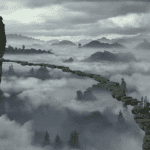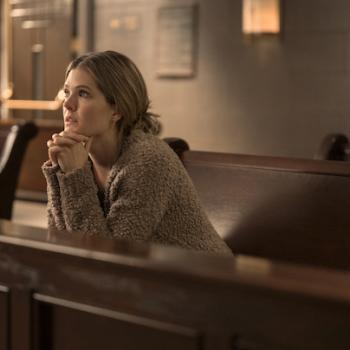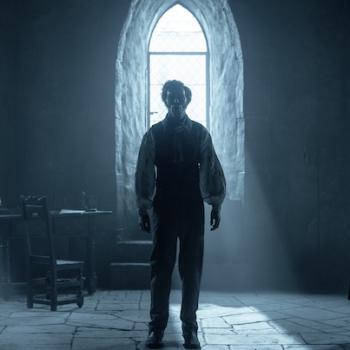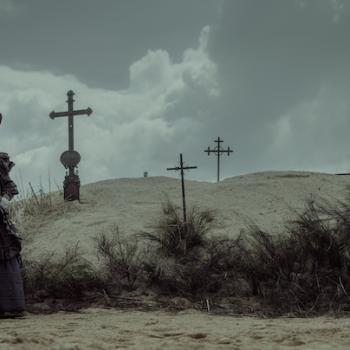
From A Ghost Story, poster art
Paul Asay: Now, I understand that the movie really grew out of a fight that you had with your wife (Augustine Frizzell). Is that right?
David Lowery: Part of it was just the idea of making a movie about a ghost, which was something I’ve been wanting to do for a while. But the emotional side of the film largely came about because of this discussion we had. It was a discussion, not an argument, but for us, we fight so infrequently that it really felt bigger than it probably was. I was getting ready to move to L.A. for a year to finish Pete’s Dragon, and she wanted to come with me, and I didn’t want to have to get rid of our house in Dallas because I really loved it. I was really attached to it. And that just led to a big disruption in our lives. We’d reached an impasse. We didn’t know what to do. And the fact that I was willing to risk the happiness in our relationship for this shabby old house that we’d been renting was problematic.
I recognized that I was at fault there and I should let go of this place, and move on, and yet it was really upsetting to me. And I just—I wanted to understand why. I wanted to do some soul-searching. And understand why I was so attached to physical spaces, particularly this one. And I also just recognized in this argument I had with my wife, that it felt like a scene from a movie. It was one of those big climactic arguments that could threaten to end a relationship. And at the end of the second act of the movie before the characters finally come to their senses and declare their love for each other at the beginning of the third act. So I took that argument and wrote it down in screenplay form and that became the opening scene of this movie. And somehow the ghost in the bedsheet worked its way in as well.
Asay: Yeah, so what about that sheet? It really worked for me, but why did you decide to depict your ghost in such a clichéd, Halloween-y way?
Lowery: Well partially, I liked it because it made me laugh. The idea of putting this ghost in an empty house and treating him seriously, it made me laugh. But at the same time, I wanted to take him seriously. There was something about that image that was not only funny, but very, very sad and lonely. Something about the childlike nature of it, the very simple almost cartoon-like symbol that that represents, that humor made it lonely. It made it sadder. And compounded the emotional potential of that image. So I wanted to take that image and see how far I could get with it. I really felt like I could make a movie that subsisted in the value that I saw in this very simple Halloween costume.
And it’s funny how we look at it and we see the Halloween costume. We see it as a Charlie Brown Halloween special or E.T. or Beetlejuice. And yet we never really think about it in terms of what a ghost actually represents, which is a person who has died and has not yet moved on. And as soon as you attach that meaning to that image, interesting things start to happen.













